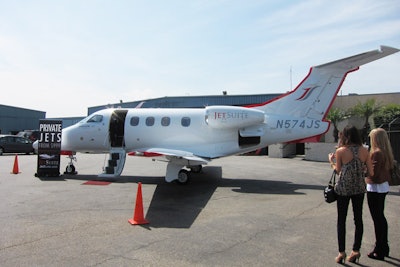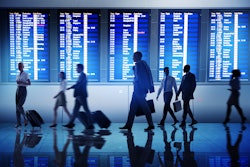
Spending on business travel in the United States is expected to increase by more than 3 percent in 2015, to nearly $300 billion, according to the Global Business Travel Association. “Thanks to a healthier domestic economy and a stronger U.S. dollar, companies are putting more travelers on the road not only because they can afford to, but because they continue to see a strong return on their business travel investment,” said Michael W. McCormick, G.B.T.A. executive director and chief operating officer. When coordinating travel for meetings and events, consider these suggestions to ensure things go smoothly.
1. Establish preferred suppliers in every sector of travel, such as airlines, hotels, and car rentals, and communicate that as part of a comprehensive travel and expense policy. “Those suppliers want to know you can drive business to them—that’s the value of your discount. So one person should shepherd the policy and really communicate why travelers should be adhering to it. No one wants to lose a discount,” says Leslie Andrews, a hospitality instructor and former corporate travel manager.
2. Book early. According to a survey of business travelers conducted by CWT Solutions Group, the consulting arm of Carlson Wagonlit Travel, the further in advance a trip is planned, the more likely it is to be deemed successful. The research found that a trip booked fewer than three days in advance runs a 21 percent risk of being unsuccessful, while those trips booked more than two weeks in advance have an 11 percent chance of being deemed unsatisfactory.
3. Use a variety of tools to communicate with travelers. “Don't over-rely on emails. Use social media and text messages too. Ninety percent of text messages are read within three minutes,” says Ana Pedersen, vice president of global sales at BCD Travel.
4. Send just-in-time alerts. “No one is going to remember whether your corporate hotel rate includes Wi-Fi if you email that information a month before check-in. But they will act on corporate policy if they get a text message an hour before they arrive at the hotel,” Pedersen says.
5. Consider coordinating time-saving programs such as Global Entry or T.S.A. PreCheck security screening programs, suggests the G.B.T.A., since those services will “get travelers through the airport more efficiently, and for business travelers time is money.”
6. Seek input. “There’s a need to have a more customer-centric approach,” Andrews says. "The top-down mentality of managing travel is gone. There needs to be an opportunity for the traveler to have some type of impact on what an organization does. You want to build a willing spirit of cooperation for an organization to pay attention to your policy, and you do that by building trust."
7. Use digital management systems and mobile apps. “Using a platform to coordinate travel for yourself and others inside your company will allow you to efficiently make travel coordinations and adjust those travel coordinations easily,” says Patrick Linnihan, president of Gant Travel.
8. Institute an emergency response plan, particularly for international travel. The G.B.T.A. recommends the plan covers all contingencies, including military action, political unrest, and natural disasters.



















!['The Cathedral of St. John the Divine [in New York] is such a striking hidden gem and one of my favorite event venues in the city,' says Tinsel Experiential Design's Erica Taylor Haskins.](https://img.bizbash.com/files/base/bizbash/bzb/image/2024/09/_M627287_pano.66db3413ac491.png?auto=format%2Ccompress&fit=crop&h=112&q=70&w=112)